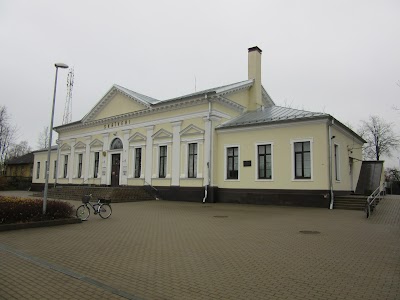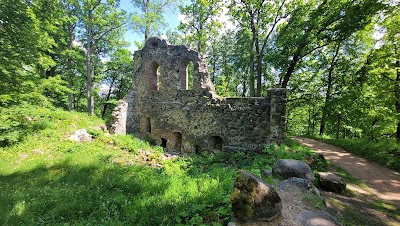Rūjiena Church (Rūjienas baznīca)
Overview
Introduction to Rūjiena Church
Nestled in the serene landscapes of Skrīveri Municipality, Latvia, the Rūjiena Church, known locally as Rūjienas baznīca, stands as a testament to the country’s rich cultural heritage and architectural beauty. This historic church, dating back to the early 20th century, is not just a place of worship but also a significant landmark that reflects the unique blend of Latvian tradition and religious devotion.
The church is characterized by its striking neo-Gothic architectural style, which features tall spires and intricate stonework. Upon approaching the church, visitors are greeted by its impressive façade, adorned with beautiful stained glass windows that depict various biblical stories. These artistic elements are a highlight for many travelers, as they provide a glimpse into the craftsmanship and artistic trends of the era in which the church was built.
Historical Significance
Rūjiena Church has a profound historical significance, having been constructed in 1902. It serves as a vital cultural landmark for the local community, witnessing numerous events from weddings and baptisms to significant religious holidays. The church is dedicated to St. John the Baptist and has played an essential role in the spiritual life of the region, offering a place for reflection and community gatherings.
For foreign travelers, understanding the context of this church adds depth to the visit. Latvia, with its turbulent history of foreign rule and cultural shifts, has seen its churches serve as bastions of local identity and resilience. Rūjiena Church is no exception; it stands as a symbol of the Latvian people's enduring spirit and their connection to their roots, making it a point of interest for those seeking to learn more about the country’s history.
Visiting Rūjiena Church
When planning a visit to Rūjiena Church, travelers will find that the surrounding area is equally enchanting. The church is located within a picturesque village, surrounded by lush green fields and tranquil landscapes that are perfect for leisurely walks and exploration. The serene atmosphere invites visitors to take a moment to breathe in the fresh Latvian air and appreciate the natural beauty that envelops this sacred space.
Inside the church, visitors can admire the wooden altar, which is intricately carved and showcases the artistry of local craftsmen. The interior is adorned with various religious artifacts and icons that further enhance the spiritual ambiance of the church. Guided tours are sometimes available, providing insights into the church’s history and its role in the community, allowing travelers to immerse themselves fully in the experience.
Conclusion
Rūjiena Church is more than just a building; it is a vibrant part of the cultural tapestry of Latvia. For foreign travelers, a visit to this church offers a unique opportunity to connect with the local culture, history, and spirituality of the Latvian people. Whether you are drawn by the architectural beauty, the historical significance, or the peaceful surroundings, Rūjiena Church promises an enriching experience that will leave a lasting impression. So, as you wander through Latvia, make sure to include this remarkable landmark on your itinerary and embrace the stories it has to tell.





